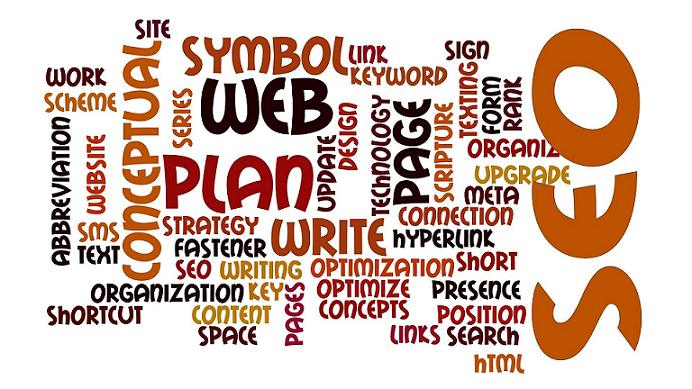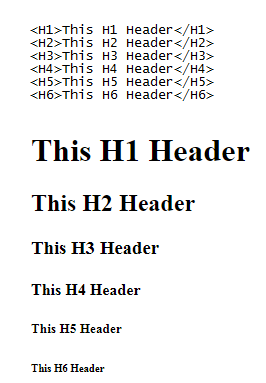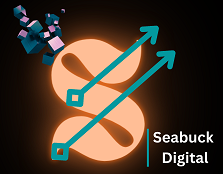Introduction
Often marketers invest majority of their time and effort in the linkbuilding strategy but they should also take off-Page SEO strategies to be equally important.
If you are a beginner to on-page SEO then look no further as this article will give you a brief insight into the whole subject.
Let us dive straight into it.

What is on-page SEO?
On-page SEO refers to the optimization of individual web pages in order to rank higher and earn more relevant traffic in search engines. This includes optimizing the content and HTML source code of a page. On-page SEO elements include titles, descriptions, keywords, and image tags, among others. These elements are used to tell search engines what the page is about and how it should be indexed. Optimizing these elements can improve a page’s search engine ranking and visibility, resulting in more relevant traffic.
Why is on-page SEO important?
You have to agree with me on this and that is on-page SEO is as important as off-page SEO. It helps search engines understand the content and structure of your website and determine the relevance of your website’s pages to a particular search query. By optimizing the on-page elements of your website, such as the titles, descriptions, and keywords, your website can increase its chances of ranking higher in search engine results pages (SERPs) for relevant search queries. This can lead to increased visibility, more relevant traffic, and ultimately more conversions and revenue.
On-page SEO can help improve the user experience by making it easier for users to find the information they are looking for on your website. So, now you can very well understand that on-page SEO is crucial for improving the visibility and relevance of a website in search engine results, which can lead to more traffic and revenue.
On-Page SEO Elements
On-page SEO elements are the various components of a website that can be optimized in order to improve its search engine visibility and relevance. Some of the key on-page SEO elements include: Title tag, Meta description, Headings, Keywords, Content, URLs, Images and videos, Internal linking, Mobile optimization, Page speed etc.
We will dive into the details of these elements and will try to understand why they are so important.
Content elements
Content is a crucial element of off-page SEO, as it plays a significant role in building backlinks and increasing a website’s visibility and credibility in the eyes of search engines.
High-Quality Page Content
You all know that high-quality, relevant, and informative content is essential for attracting and engaging an audience, which in turn can lead to more backlinks and social shares for you.
In addition to creating high-quality content, it’s also important to make sure that your content is easily discoverable and shareable by optimizing it for search engines and social media. This can include using relevant keywords, Meta tags, and alt tags, as well as making sure that your content is easily shareable by including social media sharing buttons.
By effectively utilizing content in off-page SEO, you as website owners can increase their visibility, drive more traffic to their site, and ultimately, improve their search engine rankings.
What is E-A-T and how does it impact my on-page SEO?
You must have heard about Google’s E-A-T. The full form of E-A-T is Expertise, Authoritativeness, and Trustworthiness. It’s a concept that was introduced by Google to assess the quality of a website and its content, particularly when it comes to the medical, financial, and legal niches.
Does QRG ring any bell to you? Google’s Quality Rater Guidelines (QRG) states that the purpose of E-A-T is to evaluate the level of trustworthiness and authority of a website. E-A-T has the ability to provide accurate, helpful and trustworthy information to its users.
E-A-T can impact your website’s rankings by improving the overall quality of your content and website. Websites with high levels of E-A-T are more likely to be seen as credible, trustworthy and authoritative sources of information, and are therefore more likely to rank higher in search results.
Keywords
Keywords play a crucial role in your SEO strategy. Everywhere you look around the internet while trying to understand SEO; you will come across this word.
They help search engines understand the topic and focus of your webpage. By including relevant keywords in different elements of a webpage, such as the title, Meta description, header tags, and content, search engines are able to better understand what the page is about and how it should be indexed.
Another role of keywords in on-page SEO is to optimize the content of your webpage. This means including keywords in headings, subheadings, and throughout the text in a natural and meaningful way. It’s important to note that keyword stuffing, which is the practice of including too many keywords in the content, is frowned upon by search engines and can even lead to penalties. Be always careful with it.
SEO Writing
Even if you are not a writer or have trouble with writing you cannot skip SEO writing. You might need content creators for this invaluable job.
SEO writing is the practice of creating your content that is optimized for search engines, while still being valuable and engaging for your users. It involves using various on-page SEO techniques, such as including keywords in the right places and using Meta tags, to make the content more discoverable and relevant to search engines. It also includes creating and optimizing title tags, Meta descriptions, and header tags, which provide a summary of the webpage’s content to search engines.
The goal of SEO writing is to create content that is both search-engines friendly and user-friendly. This means that your website’s content should be well-written, easy to read, and provide value to your reader, while also including relevant keywords and phrases to make it more discoverable in search results. It’s important to note that while SEO writing can help improve the visibility and search engine rankings of your webpage, it should not come at the expense of creating high-quality, engaging, and informative content.
Visual Assets
Visual assets include images and videos.
They can play an important role in your optimizing strategy. They can help to enhance the user experience, making your webpage more engaging and memorable.
Here are some ways that visual assets can impact your on-page SEO:
- Image optimization: Optimizing your website’s images by compressing them, using descriptive file names, and including alt tags can help search engines understand the context of the images, making them more discoverable in image search results.
- Video optimization: Optimizing your website’s videos by including transcriptions, closed captions and providing a video sitemap can make them more discoverable in video search results.
- Enhancing user experience: Visual assets can make your webpage more engaging and memorable, which can lead to increased engagement, such as more time spent on the page, higher click-through rates, and more shares on social media.
- Adding context to the content: Visual assets can help you to add context to the content, making it more informative, and easy to understand.
- Increasing dwell time: The use of visual assets can encourage your website users to stay on the page longer, which can have a positive impact on the search engine rankings, as a long dwell time is seen as a sign of a good user experience.
It’s important to note that while visual assets can have a positive impact on on-page SEO, they should be used in a way that enhances the user experience and adds value to the content. Additionally, it’s important to optimize visual assets by compressing them and providing appropriate file names and tags, to make them more discoverable by search engines.
HTML elements
HTML elements are the building blocks of a webpage, such as the title tag, header tags, Meta description, and alt tags.
These elements play an important role in on-page SEO by providing structure, context, and information to search engines, helping them understand the content of a webpage and make it more discoverable in search results.
Page Titles
Title tags are HTML elements that provide a brief summary of the content of a webpage, and are displayed as the title of the page in search results, making them crucial for on-page SEO as they help search engines understand the focus of the page and entice users to click on the link.
For example, in my website, if you view the page source then you will get this HTML code for title tag.
<title>Home – Seabuck Digital Marketing | SEO Strategies and Link Building Guide</title>
Headers
Headers, such as H1, H2, and H3 tags, are HTML elements that provide a hierarchical structure to the content of a webpage, helping search engines understand the content of a webpage, and making it more scannable and user-friendly for users, which is important for on-page SEO.
Below is an image which depicts the HTML tags for all Headers and their output.

Meta Descriptions
Meta descriptions are HTML elements that provide a brief summary of the content of a webpage and are displayed in search results, making them crucial for on-page SEO.
They help search engines understand the focus of the page and entice users to click on the link, while also providing clear and concise information to the users.
For Example the Meta description in my website can easily be viewed from its page source.

Image Alt-text
Image Alt-text, also known as “alt tags”, are HTML elements that provide a brief description of the content of an image, which is important for on-page SEO.
They help search engines understand the context of the images and make them more discoverable in image search results, as well as providing accessibility for visually impaired users.
For example, check the below HTML tags for Alt-Text.
<img class=”header-image is-logo-image” alt=”Seabuck Digital Marketing | SEO Strategies and Link Building Guide” src=”https://seabuckdigital.com/wp-content/uploads/2022/12/cropped-Seabuck-Digital-1.png” width=”223″ height=”174″ />
Structured Markup
Structured markup is a technique that uses specific HTML tags and schema.org vocabulary to provide more information about the content of a webpage to search engines, making it easier for them to understand the context and meaning of the content.
It is important for on-page SEO, as it can help to improve the visibility and search engine rankings of a webpage.
Site architecture elements
Having a well-structured website is important because it helps search engines understand the content and organization of a website, making it easier for them to crawl and index the pages.
It improves the visibility and search engine rankings of the website, while also making it more user-friendly, easy to navigate and accessible for users, increasing the chances of engagement, conversion and ultimately the business goals.
Page URLs
Page URLs, also known as permalinks, are the web addresses that lead to a specific page on a website.
They are important for on-page SEO because they help search engines understand the structure of a website, and the relationship between pages, making it easier for them to crawl and index the website, while also making the pages more shareable and memorable for users.
Internal Linking
Internal linking is an important aspect of site structure as it helps search engines understand the structure of your website and the relationships between your pages.
Mobile Responsiveness
Mobile responsiveness is a crucial aspect of on-page SEO as it ensures that your website is easily accessible and usable on a variety of devices, including smartphones and tablets, which is important for both user experience and search engine rankings.
Site Speed
Website speed is a key factor in search engine optimization as it directly impacts user experience and search engine rankings, with faster loading websites generally performing better in terms of visibility and engagement.
On-Page SEO Checklist
An on-page SEO checklist may include the following items:
- Crawl your website
- Optimizing page titles and meta descriptions
- Using header tags (H1, H2, etc.) correctly
- Incorporating keywords into content in a natural way
- Creating a clear website hierarchy and internal linking structure
- Ensuring the website is mobile responsive
- Optimizing images and videos for faster load time
- Creating high-quality and unique content
- Utilizing schema markup
- Ensuring the website has a fast loading speed
- Creating a sitemap and submitting it to search engines
- Utilizing social media tags for better visibility
- Monitor and fix broken links
- Creating a robots.txt file
- Creating a custom 404 page
- Enabling browser caching
- Enabling Gzip Compression
- Utilizing AMP (Accelerated Mobile Pages) if applicable
- Utilizing CDN (Content Delivery Network) if applicable.
Please note that this list is not exhaustive and SEO is a continuous process, so it’s important to regularly monitor and update your website to ensure it is optimized for search engines.
Read More

